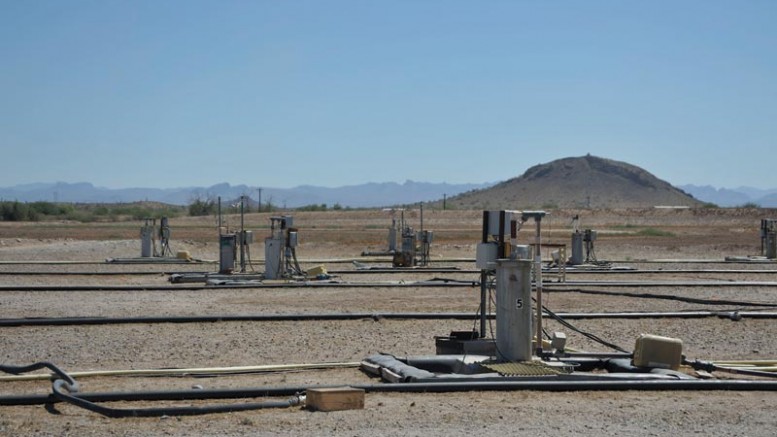It was recently reported in the Financial Post that in-situ leaching of copper is an “unproven technology.” But after personally spending five years working at the in-situ copper leaching operation at San Manuel, Ariz., I can state that it has definitely been proven.
A little history may be required to better understand this technology, since it is not widely known.
In-situ leaching (ISL) itself is not a new technology. It has been used for uranium mining for over 50 years, and today nearly half of all uranium mining is carried out using this method.
For those unfamiliar with ISL, it is the process of circulating solutions through a rock mass and recovering the resultant pregnant leach solution for further processing. While the solution circulates, it can dissolve certain minerals depending on the composition of the solution.
In the case of copper, the solution used is a weak sulphuric acid similar to that used for typical heap leaching of copper oxides. The pregnant leach solution is then processed at a solvent extraction-electrowinning plant. In San Manuel there were over 900 wells in operation, which proved that it can be successful on a large scale.
ISL started as early as 1986 at San Manuel while the open pit was still active. It was known at that time that some of the copper resource was not going to be recoverable by traditional methods. Therefore, Magma Copper pioneered some of the earliest testing of in-situ copper leaching.
In 1995, the open pit was mined out, and ISL became the primary copper-oxide recovery method at San Manuel.
Production ramped up for several years until annual copper production reached 40 million lb. at an operational cost of US40¢ per lb.
I was part of the technical work group during this period and was responsible for ore reserves and well layout. With the low capital investment required, the total costs including depreciation and amortization was still under US70¢ per lb. These are pretty attractive figures in today’s market.
It was unfortunate that the operation began winding down in 2000 due to shareholder backlash at BHP over the purchase of the Magma Copper’s North American operations. Shortly after the purchase, many of them became unprofitable in the late 1990s due to low copper prices.
Despite the profitability of the San Manuel ISL operation, it was closed along with all of the other North American assets. This ended 15 years of in-situ copper leaching production, which amounted to over 250 million lb. copper during its lifetime.
ISL has the benefit of being a low environmental impact mining operation, with little infrastructure and capital investment required. It can be used when the geological environment is suitable (copper oxides and fragmented orebody), and has the potential to be a very profitable enterprise.
Gary Sutton,
BSc Geology and MBA,
Former geologist responsible for ore reserves at San Manuel mine,
Surrey, B.C.



Be the first to comment on "Letter to the editor: In-situ copper leaching is a proven technology"